This year’s blockbuster exhibition at the Musée d’Orsay is Paris 1874: Inventing Impressionism — a celebration of the 150th anniversary of the widely adored style of art.

Impressionists are so beloved these days, in fact, that it’s close to impossible to imagine a time when their work wasn’t admired and acclaimed. But it took these artists many years, and much heartache, before they found critical (and financial) success.
Claude Monet arrived in Paris in 1859, as a stars-in-his-eyes nineteen year old. In the same year, his future friend and peer, Edouard Manet, a wealthy Parisian determined to buck his family’s traditional expectations for a life devoted to art, submitted his first work to the Salon, the official art exhibition of the powerful Académie des Beaux-Arts. Its rejection spurred Manet on a quest to infiltrate the academy’s refined walls, on which hung paintings of a very traditional nature — depictions of classical scenes rendered in impeccable strokes.
But a new generation of painters was starting to rethink their art form — thematically and technically, and also existentially, because photography was on the rise.
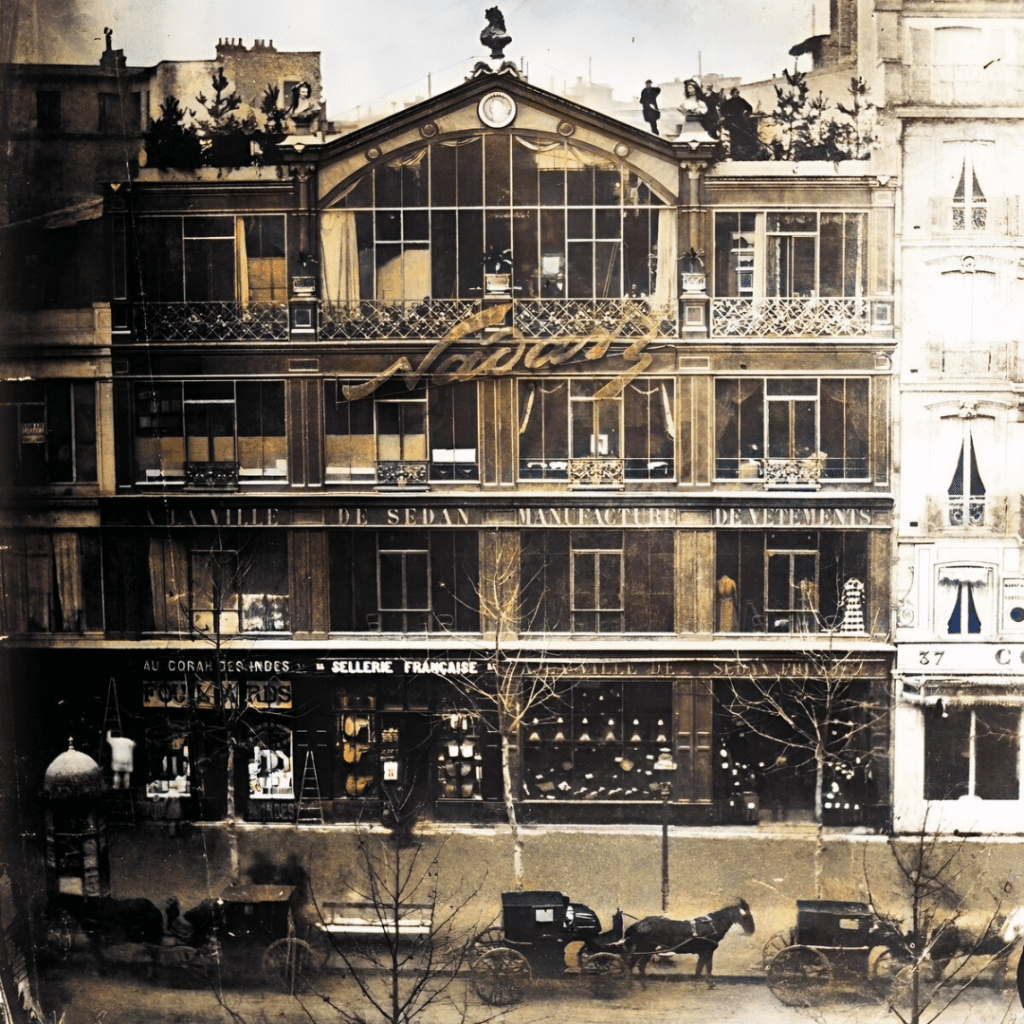
In 1860, the photographer Nadar showcased to great acclaim 60 portraits in his new third-floor studio at 35 Boulevard des Capucines (above), in the up-and-coming Opéra quarter. (Work would begin on the new Palais Garnier the following year.)
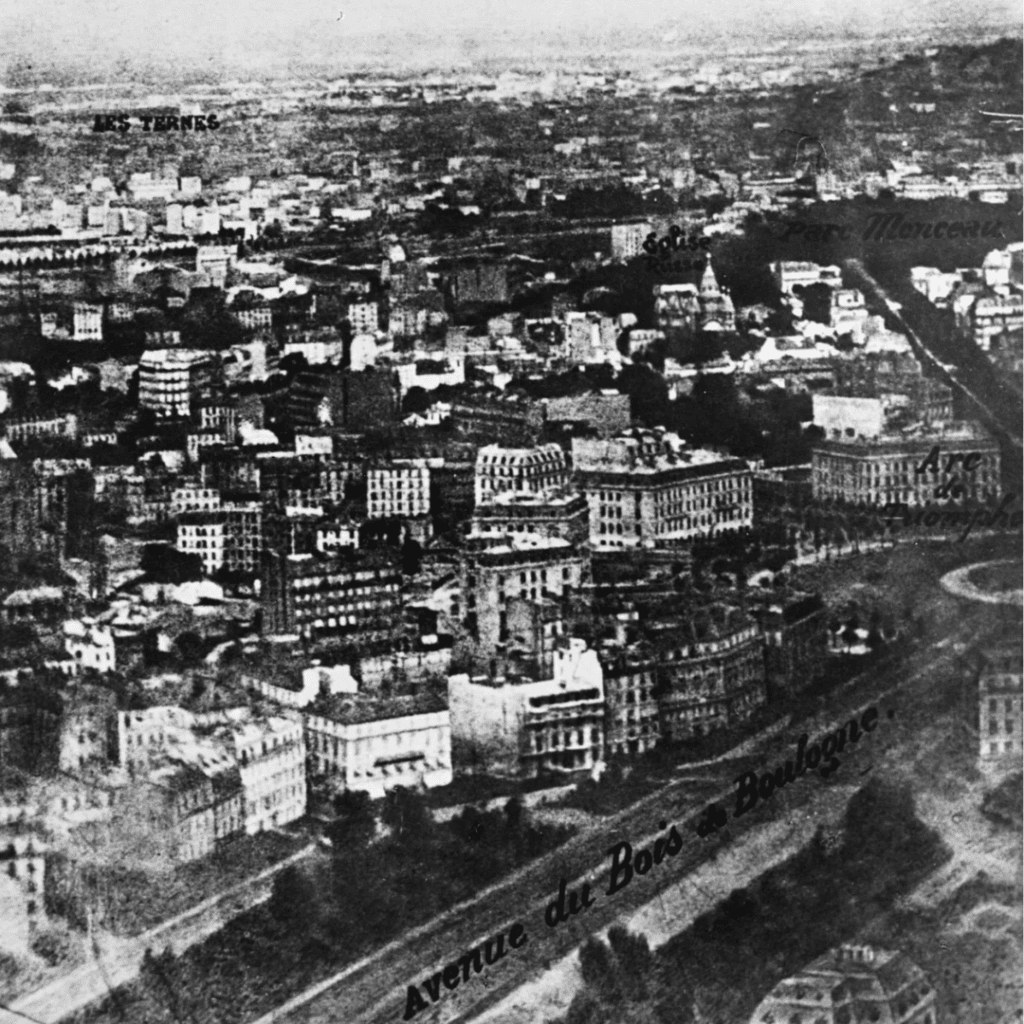
Nadar not only put portrait painters on notice; he also worked outdoors — taking the first aerial images from a hot-air balloon — and soon all painters, seeing photography encroach on their artistic turf, would be forced to consider pushing their own boundaries, to ask themselves how they could best portray modern life in a changing world.
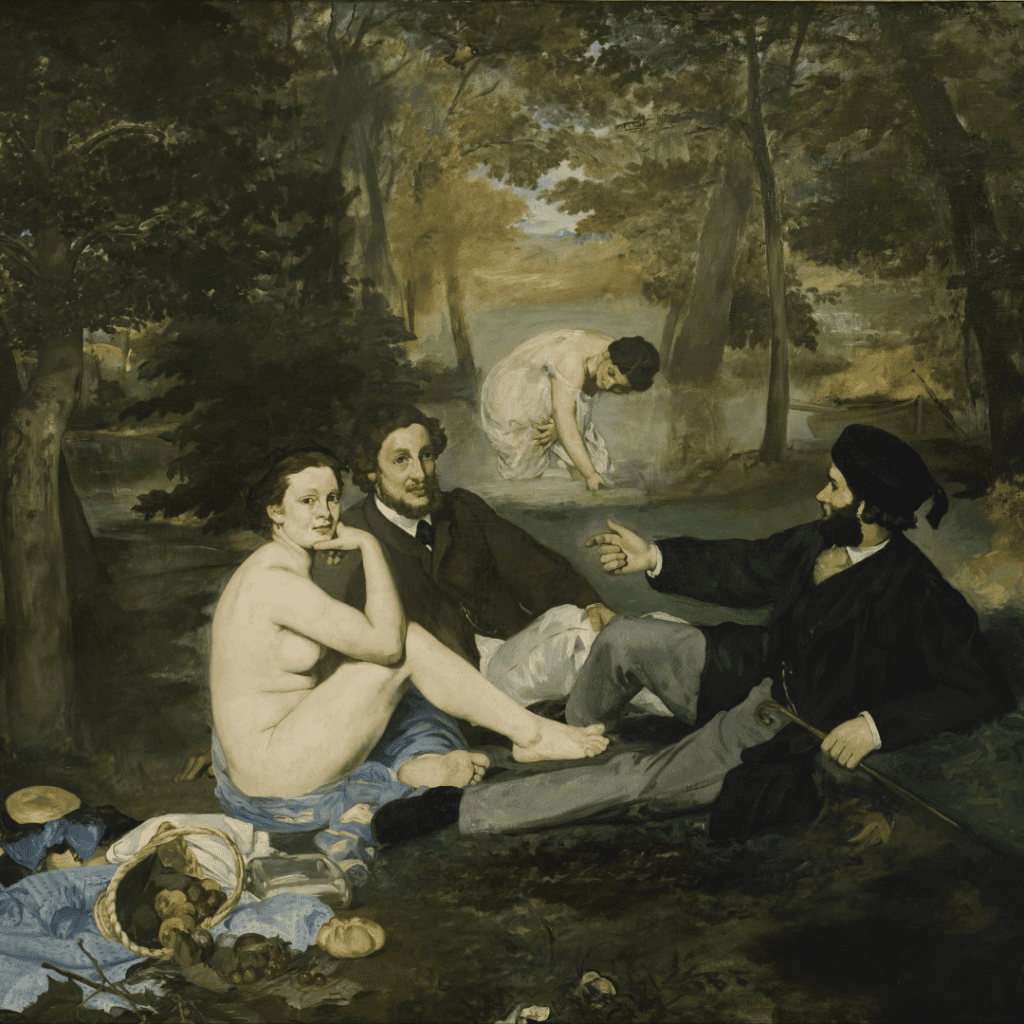
In the Salon of 1863, Manet submitted Luncheon on the Grass (above). It was, again, rejected, along with thousands of other works. The mass rejection caused such waves that Napoléon III ordered an exhibition of the excluded art, which came to be called the Salon des Refusés. Audiences flocked — mostly to see Manet’s reputedly scandalous painting, which did in fact live up to its reputation. Parisians were shocked by Manet’s scene, not just because the two women in the picnicking party were brazenly, unabashedly naked, but also because it was so matter-of-factly modern, set as it was in contemporary times. The nudity was all too raw and real.
That was nothing compared to the outrage hurled at Manet’s Olympia, which the Salon accepted for 1865. The public was horrified at the depiction of an unapologetically unclothed courtesan, who seemed to stare out and ask, ‘So what?’
At that same salon Monet, who had spent some time away from Paris, quietly showed a couple of seascapes. He was about to leave Paris once again, to paint his own Déjeuner sur l’Herbe. Berthe Morisot was also accepted by the Salon in 1865, and again the next year, alongside another future Impressionist, Camile Pissarro. Manet didn’t submit, still burnt by the reaction to Olympia. Other young painters having trouble cutting through to critical success included Pierre-Auguste Renoir and Paul Cézanne. While Monet had his work accepted, he would soon experience disappointment once more, when his lovely Women in the Garden was turned down in 1867.
In that year, Monet, Renoir and Pissarro started hanging out riverside in Chatou, just west of Paris, where they would invent a new style of painting — en plein air — to capture the glow of light on water, the beauty of a fleeting moment.
Monet’s experimentation with the effects of sunlight produced a masterpiece in the luminous snowscape, The Magpie, of 1869. Sadly, it was spurned by the Salon, although Manet had better luck with The Balcony, for which his new friend (and future sister-in-law) Morisot modelled (below).
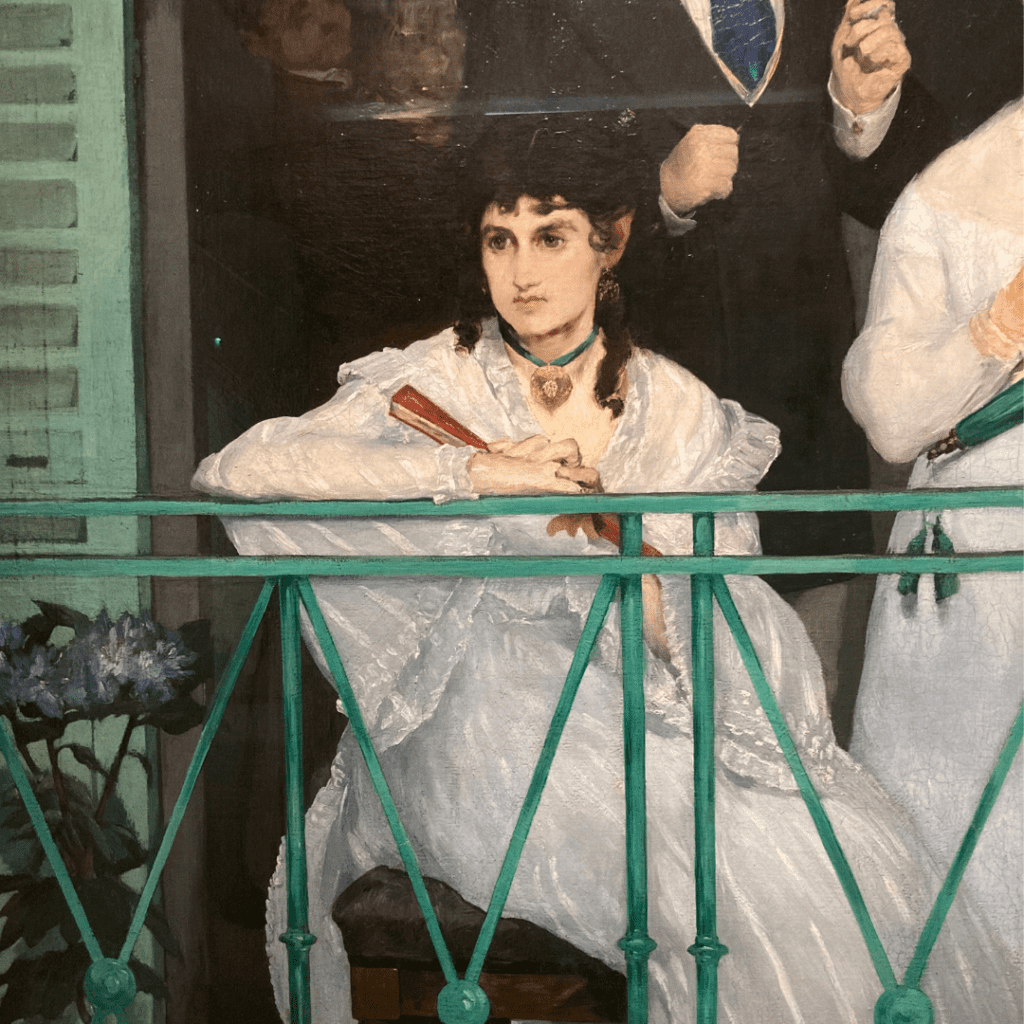
Art took a back seat to harsh reality during the Prussian Siege of 1870, and the subsequent bloody civil war. But the city recovered in a surprisingly short time, as though Parisians were desperate for a new age to begin. The era that was dawning would one day be labelled the Belle Époque, for the way it celebrated beauty, love, and art.
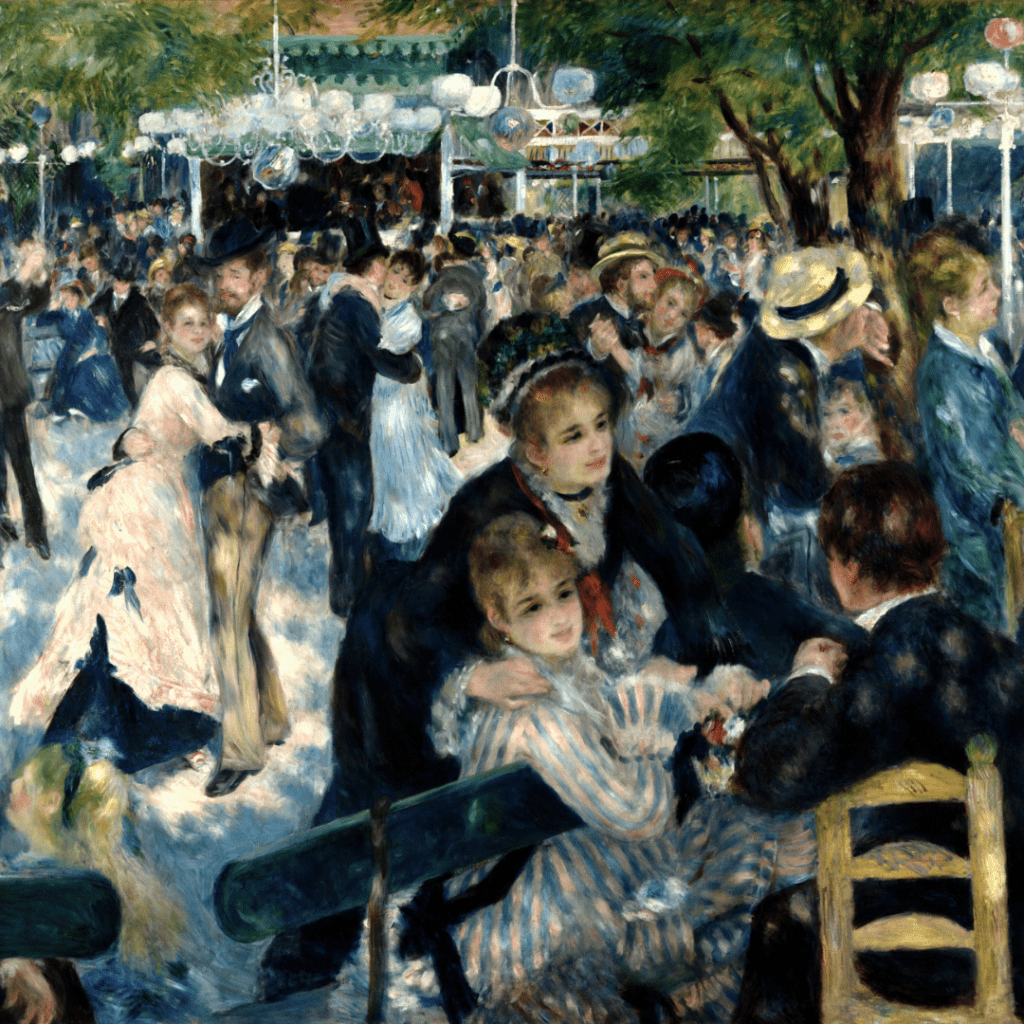
By 1874, many artists were more than ready to represent this new age, and to have their own moment in the sun. It was time for a new world, time to be brave. And so, Monet, Pissarro, Cézanne, Renoir, Morisot, Sisley, Degas and others banded together for their own Salon des Refusés. (Manet declined, feeling that he’d just broken through with the Salon, having had his work The Good Pint accepted in 1873.)
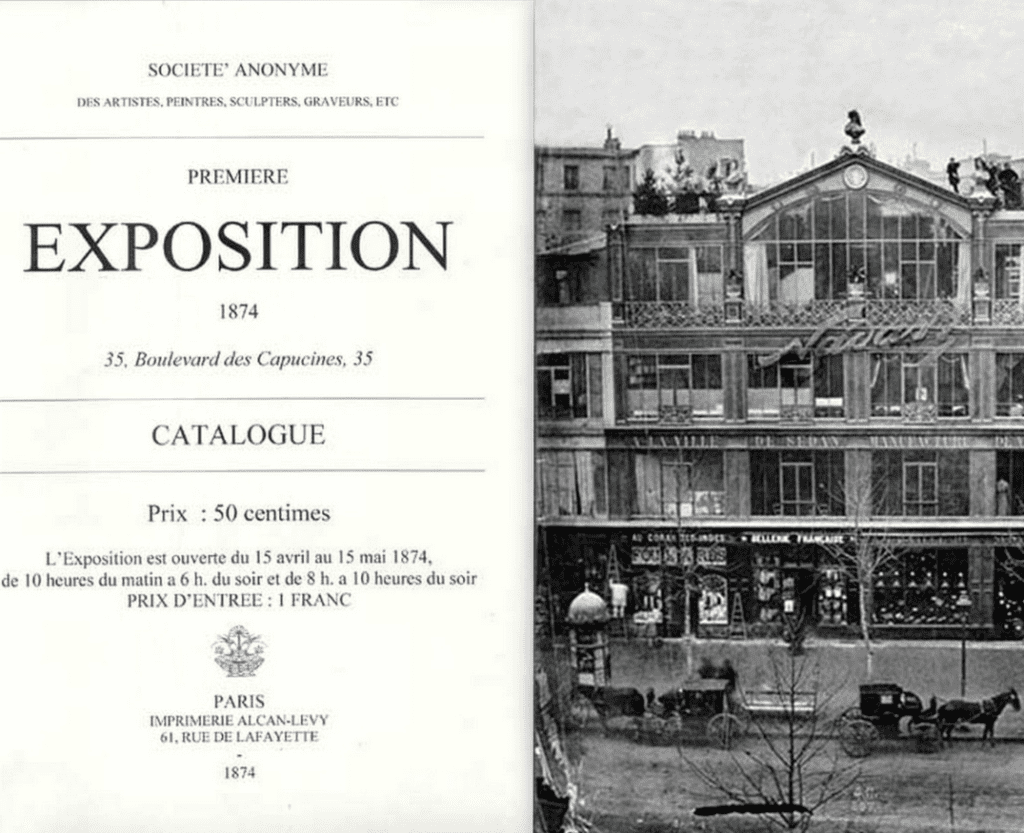
The rebel event was held over one month at Nadar’s studio, and showcased 165 works, including the painting that would become the most controversial, but eventually the most iconic: Monet’s Impression, Sunrise (below).
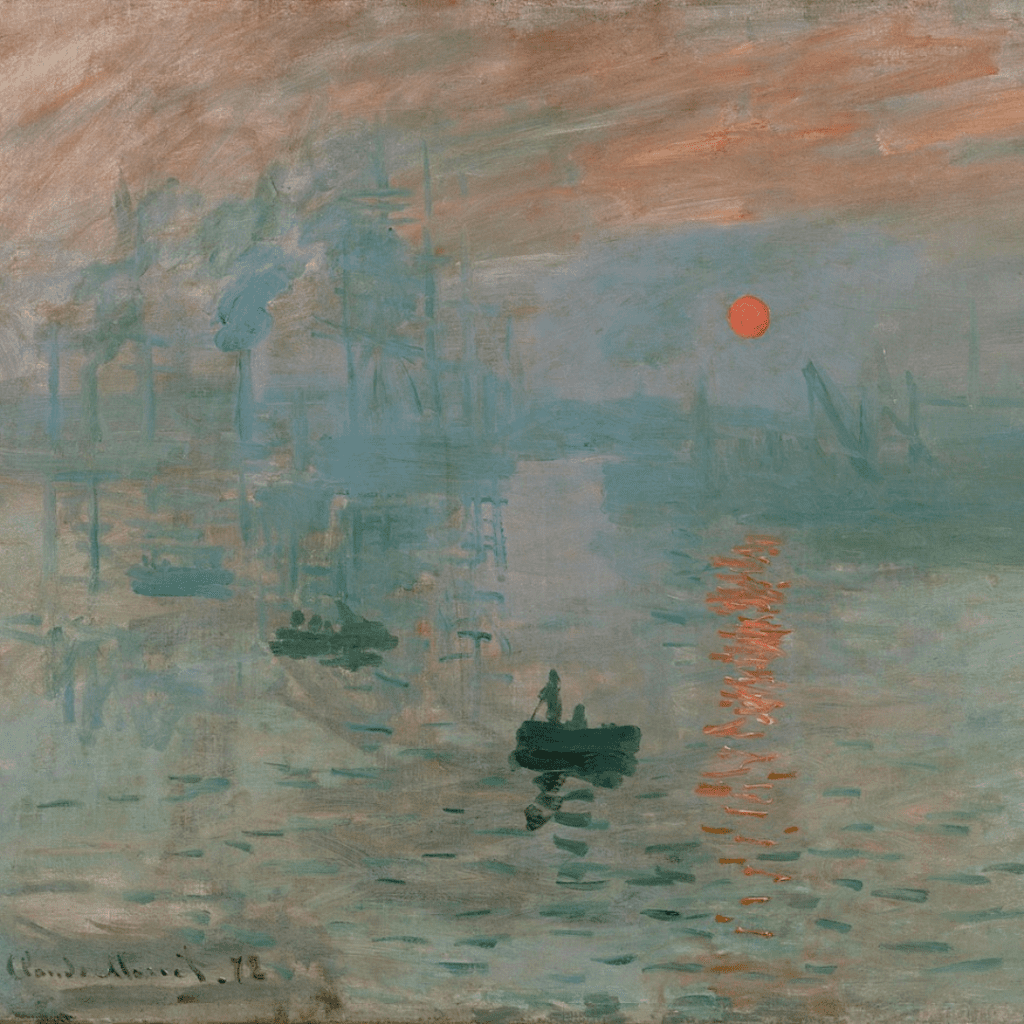
Monet’s painting was, in fact, the most ridiculed work of the critically panned exhibition. Journalist Louis Leroy wrote, in an article entitled ‘Exhibition of the Impressionists’: ‘Impression! Of course. There must be an impression somewhere in it. What freedom … what flexibility of style! Wallpaper in its early stages is much more finished than that.’
And so, the genre was officially named. The artists, at first, didn’t appreciate the label. Over time, of course, it became a badge of honour and ultimately respect. Fast-forward 150 years and the Impressionists remain much-loved artists worldwide.
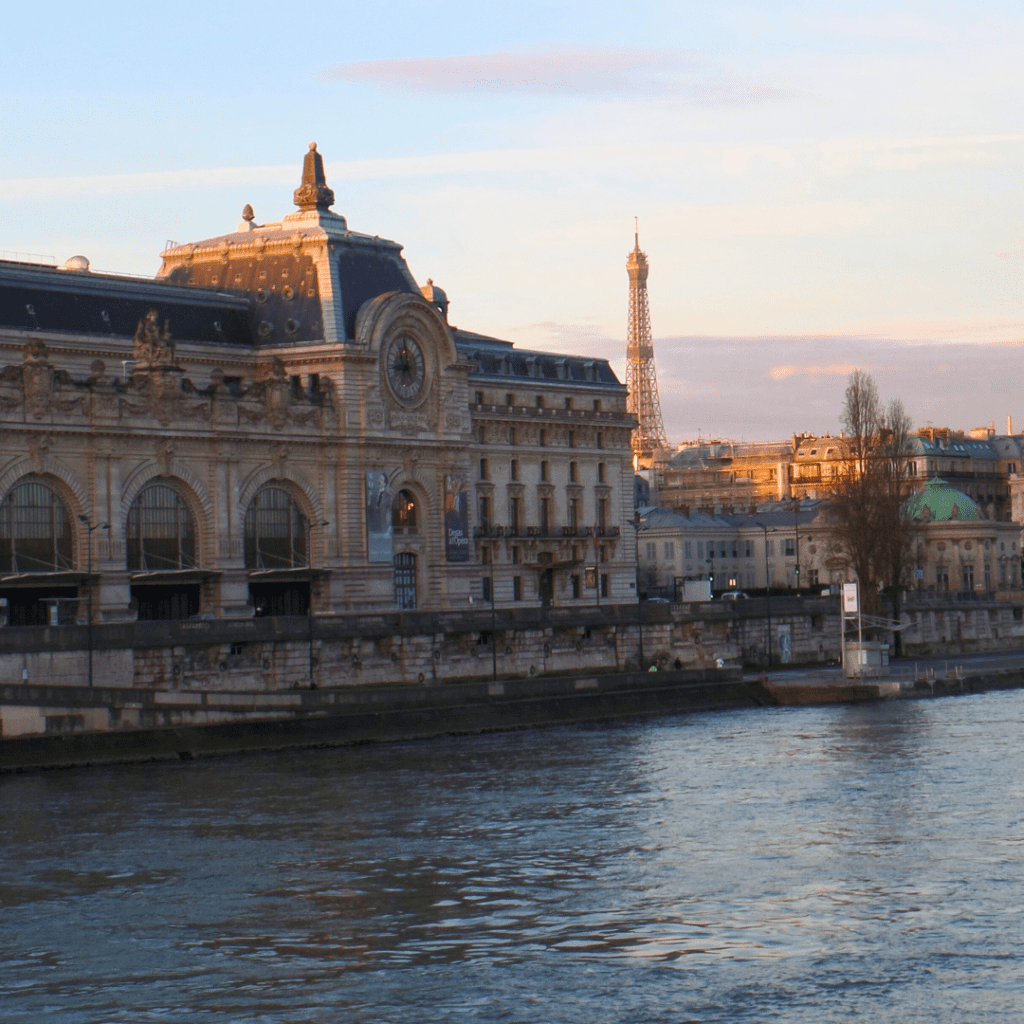
Only part of the façade of Nadar’s one-time studio remains, but it’s fitting that the celebration of the original exhibition should take place at the Musée d’Orsay (above), because the museum boasts the world’s largest collection of Impressionist paintings. For Paris 1874: Inventing Impressionism, the Musée d’Orsay, together with Washington’s National Gallery of Art, collected 130 works from the 1874 event, including Monet’s Impression, Sunrise, on loan from the Musée Marmottan Monet. They will be shown alongside some works from the official Salon of 1874, to highlight just how radical this generation of artwork was at the time.
The exhibition runs from 26th March 2024 to 14th July 2024, before making its way to the National Gallery of Art in Washington.

